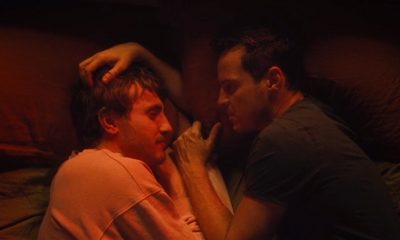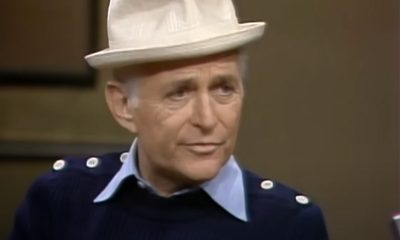Television
‘Being Mary Tyler Moore’ a relevant, entertaining look at beloved icon
Despite lacking queer content, new doc is a fun walk down memory lane
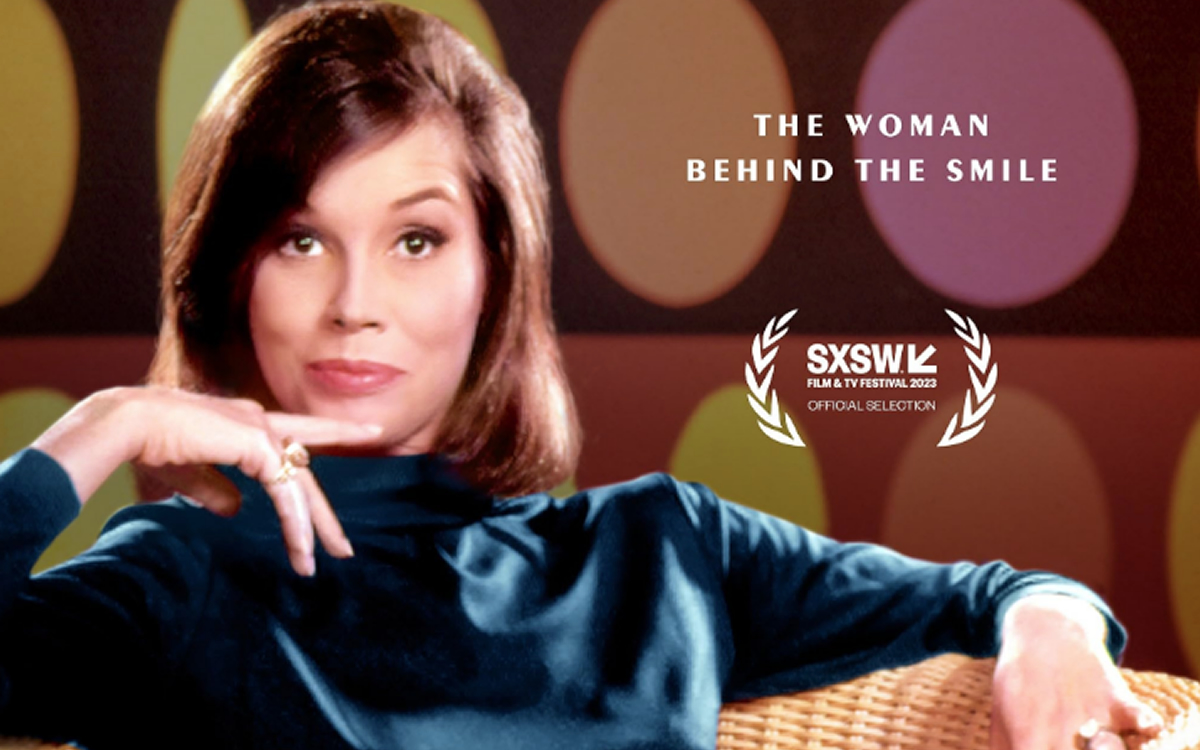
“Being Mary Tyler Moore,” a new, 1 hour-59 minute, documentary, directed by James Adolphus, airing on HBO platforms, is a valentine to Moore. It’s impossible to resist its charms, and there’s some saltiness in the midst of its sweetness. Seeing and hearing (if only in brief clips) Valerie Harper, Cloris Leachman, Betty White and other queer icons talk about, hang out with and act with Moore is well worth the watch. As are the moments when Moore forthrightly says what’s she’s thinking. Such as when she takes down David Susskind, a 1960s TV talk show host.
Moore, who died at 80 in 2017, starred in “The Dick Van Dyke Show” and “The Mary Tyler Moore Show,” two of the greatest TV sitcoms. She received a special Tony for her role in the Broadway play “Whose Life Is It Anyway?” and was nominated for an Oscar for Best Actress for her work in “Ordinary People.”
To many women and queers, Moore was a feminist and/or a queer icon.
The documentary opens with Moore’s take-down of Susskind. In a clip from a 1966 interview, Susskind asks Moore blatantly sexist questions. He bemoans the fact that, in his view, married women don’t listen to their husbands. After putting up with his condescension, Moore speaks up. Betty Friedan, author of “The Feminist Mystique” has it right, she tells Susskind. Women, Moore says, should be “a human first, a woman second, and wives and mothers third.”
There isn’t a narrator for “Being Mary Tyler Moore.” This is, at first, disconcerting. But, though the documentary might have benefitted from having a narrator, it doesn’t lack coherence. Through archival footage of televised interviews of Moore (with Rona Barrett and Dinah Shore) and audio, along with a few video clips of colleagues, friends and family talking about and interacting with Moore, we’re given a window into Moore’s life and career.
It’s fun to see clips of Moore singing and dancing with Dick Van Dyke. If you grew up watching “The Mary Tyler Moore Show,” the documentary’s clips from the show will bring back fond memories. Those who’ve never watched MTM will come away with an appreciation of why their moms and grandmas loved the series. Watching Moore toss her beret in the air in the clip from “The Mary Tyler Moore Show” credits, I recalled what a lifeline Mary Richards was for second wave feminists.
Though a loving portrait, the documentary doesn’t leave out Moore’s struggles with alcoholism or how dysfunctional her family was when she was a child.
Moore married Dr. Robert Levine in 1983. Levine, who was her husband until her death, was a producer of the documentary. Because of this, the documentary has charming home movies of Moore with her dogs and at her bridal shower (where Betty White takes part in roasting the bride to be).
The documentary notes Moore’s superb portrayal in “Ordinary People” of a cold, angry and grieving mother, and of a paralyzed woman in “Whose Life Is It Any Way.”
Going from the sublime to the campy, there’s a clip of Moore with Elvis Presley in the 1969 movie “Change of Habit.”
“Being Mary Tyler Moore” is insightful about the impact of “The Mary Tyler Moore Show” on women. It’s disappointing that it includes little on the impact the series had on queers. Airing in the decade after Stonewall when TV portrayed LGBTQ+ people as criminals, “sick” or sissies, the series was one of the first on TV to depict being gay in a positive light. The documentary has no clip of the episode “My Brother’s Keeper.”
In that episode, broadcast when being queer was illegal in most states, Phyllis’s brother Ben visits her. Phyllis says, “I’m so relieved,” when she learns Ben won’t marry Rhoda, her nemesis, because he’s gay.
“What is a family?” asks Moore (as Mary Richards) in a clip featured in the documentary, “but people who care about you?” This line has spoken to generations of queers.
Despite my quibble with its queer quotient, this documentary is a keeper. At a time of backlash against women’s reproductive freedom and LGBTQ rights, “Being Mary Tyler Moore” is both relevant and entertaining.
Television
PBS ‘Disco’ is a Pride party you don’t want to miss
Rich collection of footage highlighting the music and fashion of the time
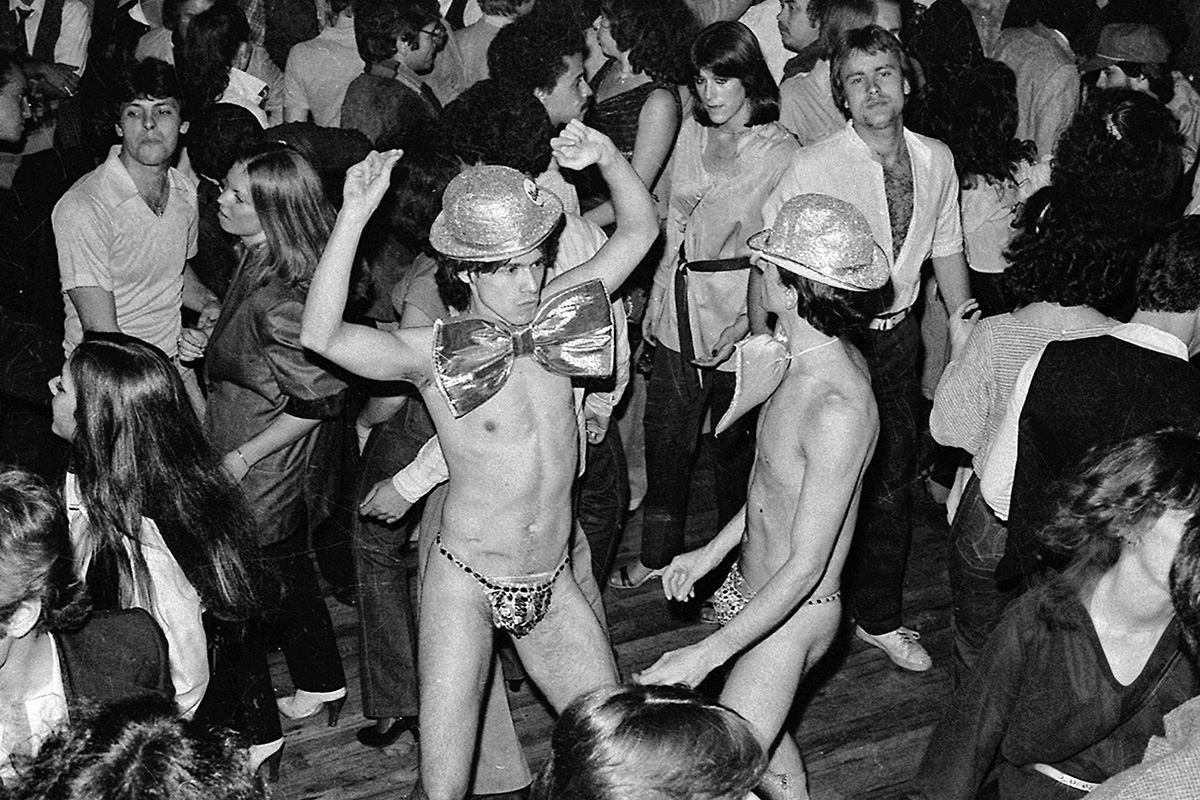
Anyone who was alive and old enough to listen to the radio in the 1970s knows that disco wasn’t just a genre of music. It was an entire lifestyle, centered around dancing in nightclubs to music that meshed R&B with new electronic sounds and an infectiously up-tempo beat – and at the height of its popularity, it had bled into the entire American culture. Every TV theme or movie soundtrack was flavored with a disco vibe, every musician seeking a comeback recorded a disco record, and every would-be dance dandy dreamed of sporting a pair of “angel flight” slacks to the disco every Saturday night.
If you didn’t live through it yourself, most of what you might know about this era is likely gleaned from its popular culture – the hot radio singles, the popular movies like “Saturday Night Fever,” the kitschy crossovers like “Hooked On Classics” and parodies like “Disco Duck” – after the skyrocketing popularity of the phenomenon had made it a golden ticket for anyone who wanted to capitalize on it. They were crossovers into the homogenizing mainstream, intended to commercialize the disco frenzy for consumers beyond the record stores and nightclubs, which became cultural touchstones, for better or for worse; but because their campy shadows still loom so large, anyone whose understanding of the “disco craze” has been gleaned only from TV or the movies is likely to remember it as a little more than a fun-but-silly footnote in late 20th-century American history.
Fortunately, PBS and BBC Studios have unveiled a new docuseries that sets the record straight – or perhaps we should say it “queers” the record, because it offers a detailed and savvy chronicle that illuminates the ties that bind the story of disco inextricably with an essential chapter of modern queer history, revealing its link to the liberation movement that blossomed in the ‘70s and continues to weave its thread through American society today.
Produced and directed by Louise Lockwood and Shianne Brown, “Disco: Soundtrack of a Revolution” – which broadcast its first episode on June 18, and is available for streaming in its entirety for subscribers via the PBS website – charts disco’s origins, success, and demise across a trio of episodes for a comprehensive look at the whirlwind of forces that surrounded and catapulted it into American consciousness. It explores the phenomenon as a vibrant and thrillingly inclusive cultural wave that originated within a blended underground of marginalized communities in New York City, at private loft parties and underground dance clubs, and grew until it had saturated the world. It highlights the sense of empowerment, made tangible in the opportunity and elevation it offered to artists who were queer, female or people of color, and yet it still welcomed anybody who wanted to join the dance with open arms. It was a chance to celebrate, to feel good and have fun after an intense period of social strife in America, which meant it went hand-in-hand with the sexual liberation that was also exploding across society. Most importantly of all, perhaps, it came with a laid-back vibe that gave you permission to let loose in ways that would have shocked your parents; in retrospect, it’s hard to imagine how anybody could resist.
Yet of course, there were people who did; and when the juggernaut that was disco inevitably began to lose steam as a result of its ubiquity and the perceived decadence of its hedonistic lifestyle, it was their voices that emerged to tell us all that “Disco Sucks” – a catch phrase that is perhaps almost as much a cultural touchstone as some of the genre’s biggest hit records.
That’s the broad overview that most people who remember the disco era already know, but “Soundtrack of a Revolution” gets much more granular than that. Much of the enlightening detail is provided, as one might expect, through a rich collection of contemporary footage highlighting the sights and sounds – the people, the parties, the music, the clubs, the fashion – of the time. Counterpoint to that material, however, comes through modern day interviews with key figures who were present for it all, whose memories help connect the dots between the evolution of disco and the societal environment in which it took place.
Of course, most audiences who are drawn to a documentary about disco will likely be coming – at least partly – for the music, and fortunately, this one gives us plenty of that, too. Better still, it gives us deep dives into some of the most iconic tracks of the seventies, not just spotlighting the artists who recorded them, but the DJs and tastemakers whose ideas and innovations built the very sound that fueled it all. Some of these pioneers may be gone, but they are represented via archival footage, and many who are still among us offer up their insider perspectives through candid filmed interviews that are woven throughout the series. There’s a first-person reliability that comes from allowing these participants in the history to tell their own part of it for themselves, and it gives the series an atmosphere of authenticity – not to mention an influx of free-wheeling, colorful personality – that can’t be achieved through the observations and analysis of expert “talking head” commentators.
It’s these voices that also help to impress upon us the feeling of freedom and acceptance that developed in those early disco clubs, where people from minority cultures could come together and feel safe as they danced to music that came from others like them, and the frustration of watching as it was co-opted by a (mostly white and heterosexual) mainstream and watered down into a pale mockery of itself – something that “killed” disco long before hate-fueled backlash from a racist, misogynistic, homophobic culminated in the infamous anti-disco rally at Chicago’s Comiskey Park, as documented in the series’ final episode.
Yet although it stops short of blaming homophobia and bigotry for the genre’s collapse, “Soundtrack of a Revolution” leaves no doubt of its influence over the environment that surrounded it, nor of the impact of the subsequent AIDS crisis on stopping the advance of queer liberation that was at the heart of the disco movement in its tracks – and in an election year that might make the difference between preserving or dismantling the ideal of Equality in America, the story of disco’s audacious rise and ignoble fall feels like a particularly apt warning message from the past.
Even so, one of the many gifts of the series is that it reveals a continuing creative lineage that, far from being cut off with the “death” of disco, has gone on to evolve and expand into new genres of dance and musical expression. Disco, it seems, never really died; it just went back into the underground where it was born and continued to develop, reinventing itself to meet the taste and match the needs of new generations along the way.
We could all take a lesson from that.
Television
Lesbian road movie returns with campy ‘Dolls’
A retro-inspired, neon-lit road trip/neo-noir thriller
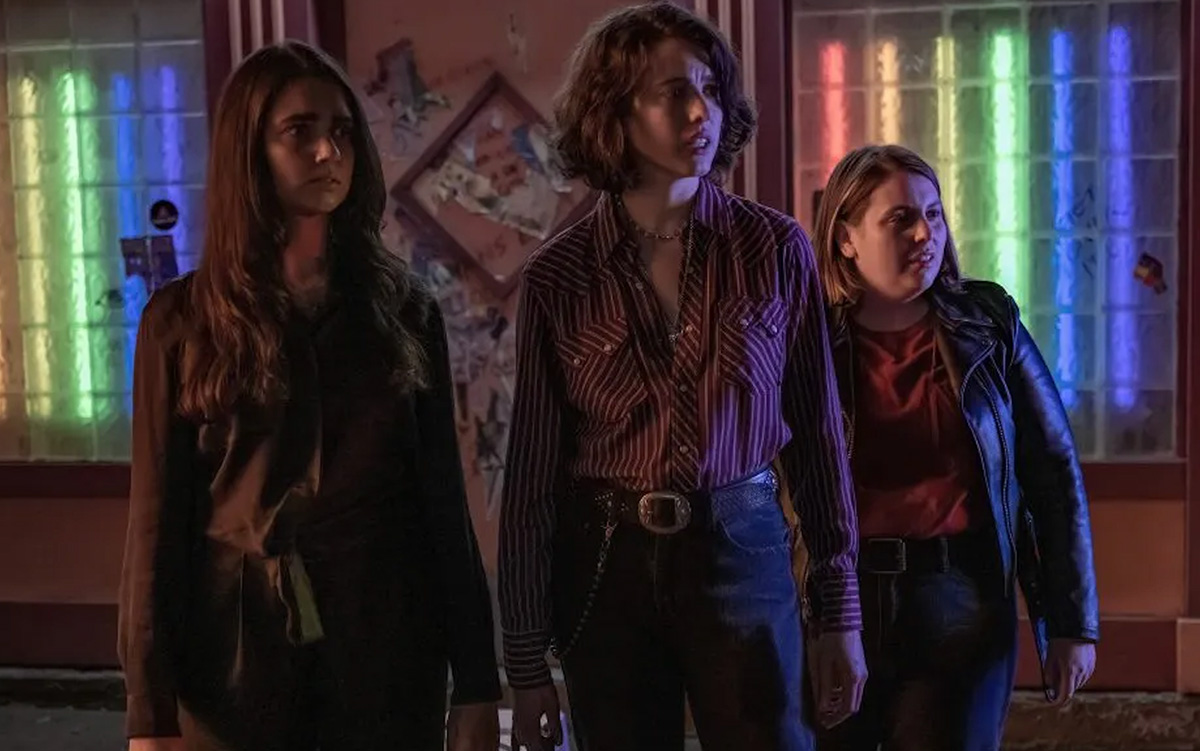
Let’s admit it: by the time Hollywood’s awards season draws to a close, most of us are more than ready for a good mindless “B movie” to cleanse our palettes. After the glut of “serious” and “important” films dominating the public conversation, it’s just incredibly freeing to watch something that feels — at some level, at least — more like entertainment than it does like doing homework.
That’s one of the biggest reasons why the timing of “Drive-Away Dolls,” which hit screens on Feb. 23, feels like a really savvy move, especially since it comes from a major Hollywood studio and boasts a multi-Oscar-winning director – Ethan Coen, who alongside brother Joel is half of one of Hollywood’s most prodigious filmmaking teams – at its helm. A retro-inspired and neon-lit road trip/chick flick/neo-noir thriller featuring lesbian leading characters and leaning hard into the visual palette of the ‘70s-era exploitation drive-in movie fodder it aims to both emulate and reinvent, it lays no claim to lofty purpose or intellectual conceit; instead, it takes its audience on an unabashedly raunchy 1999-set wild ride in which a pair of mismatched adventurers find themselves unwittingly entangled in a caper involving a mysterious briefcase and the eccentric trio of thugs tasked with tracking it down. It tells the kind of story we expect to be able to check our brains at the door for, and just sit back to enjoy the mindless thrills.
In this case, that story centers on two young queer Philadelphia women – free-spirited sexual adventurer Jamie (Margaret Qualley), whose infidelity has tanked her relationship with girlfriend Suki (Beanie Feldstein), and square peg Marian (Geraldine Viswanathan), whose discomfort with the hedonistic social scene of big city lesbian life has her longing for the simpler pleasures of her childhood home in Tallahassee – who embark on a road trip together to Florida in search of new beginnings. It’s clear from the start that they’re at cross purposes; Jamie sees the trip as an opportunity to “loosen up” her uptight friend, while Marian just wants to get back to where she once belonged. Unbeknownst to either, however, a shady cadre of operatives (Colman Domingo, Joey Slotnick, C.J. Wilson) is on their trail, thanks to something hidden in the trunk of their rental car, and their journey is about to take a detour into unexpectedly dangerous territory.
As a premise, it’s not hard to see close parallels to many of the themes one often finds running throughout the Coen Brothers’ films; the quirky trappings of its crime story plot, the granular focus on the behavioral oddities of its characters, the whimsical (if often pointed) irony it deploys for narrative effect – all these and more give Ethan’s first “solo flight” without collaboration from his brother the kind of familiarity for audiences one can only get from four decades of previous exposure. Yet while “Drive-Away Dolls” might bear a lot of the trademark Coen touches, it’s also distinctively its own creature, with a more radical stylistic approach that one might glimpse in more flamboyant outliers to their joint filmography like “The Hudsucker Proxy” or cult-favorite “The Big Lebowski,” but which here brings its heightened sense of absurdity to the forefront in service of a story which is about, as much as it is anything, the role of causality in determining the circumstances and outcomes of our lives. In other words, it’s a movie which drives home (no pun intended) the point that – at least sometimes – our paths are determined by fate, no matter how much control we think we exert.
If you’re thinking that all this analysis doesn’t quite fit for a movie that presents itself as a madcap escapist romp, you’re not wrong; in spite of its ostensible B movie appeal, Coen’s movie – co-written with his wife, Tricia Cook – evokes some pretty weighty reflections, and while that might lend a more elevated layer to the film’s proceedings than we expect, it’s not necessarily a bad thing. We can be entertained and enlightened at the same time, after all.
Perhaps more detrimental to the movie’s effect, unfortunately, is its intricately-conceived plotting. Weaving together seemingly coincidental or irrelevant details into a chain of events that propels the story at every juncture, Coen and Cooke’s screenplay feels more devoted to cleverness than authenticity; outlandish plot twists pile up, under the guise of some esoteric cosmic significance, until they threaten to collapse in on themselves; in the end, for many viewers, it might all seem just a little too forced to be believable.
Fortunately, there are things to counterbalance that sense of overthinking that seems to permeate the script, most vital of which is the movie’s unambivalent embrace of its queer narrative. While it may borrow the familiar lesbians-on-the-run road tropes queer audiences have known for decades, it presents them in a story refreshingly devoid of shame or stigma; the sexuality of its heroines is something to be explored with nuance rather than subjected to the fetishized bias of the so-called “male gaze,” and it succeeds in giving us “tastefully” explicit scenes of same sex love that celebrate the joy of human connection rather than turning it into a voyeuristic spectacle. Even more important, perhaps, “Drive-Away Dolls” omits one particularly toxic cliché of queer stories on film by refuising to make its queer heroines into victims; they’re way too smart for that, and it makes us like them all the more, even if we don’t quite find ourselves absorbed in their story.
For this, full credit must go to Qualley and Viswanathan, who individually build fully relatable and multi-dimensional characters while also finding a sweet and believable chemistry within the awkwardness of finding a romantic love story between two friends – a complex species of relationship that surely deserves a more extensive and nuanced treatment than it gets space for in Coen’s film. As good as they are, though, it’s Feldstein’s relatively small supporting turn that steals the movie, with an unflinching-yet-hilarious tough-as-nails performance as Qualley’s ex that both acknowledges and undercuts the stereotype of the “angry lesbian” while striking an immensely satisfying blow for queer female empowerment. The always-stellar Domingo underplays his way through an effectively civilized supporting performance as the chief “heavy”, and Matt Damon makes a sly cameo as a conservative politician, while daddy-of-the-decade Pedro Pascal shows up for a brief but key role that gives winking service to fans who remember him from his “Game of Thrones” days – though to say more about any of those appearances would constitute a spoiler.
“Drive-Away Dolls” has been met with mixed reviews, and this one is no exception. There’s an unmistakable good intention behind it, and much to be appreciated in its sex-positive outlook and commitment to an unapologetically queer story and characters, but while its stylistic embellishments provide for campy enjoyment, it’s ultimately diffused by its own cleverness. Still, the queer joy that frequently peeks through it is more than enough reason to say that it’s a good choice for a fun date night at the movies.
At the end of the day, what more can you ask?
Television
Watch ‘Feud,’ if you like glam and wit doused with betrayal and regret
New series focuses on Truman Capote and NYC socialites
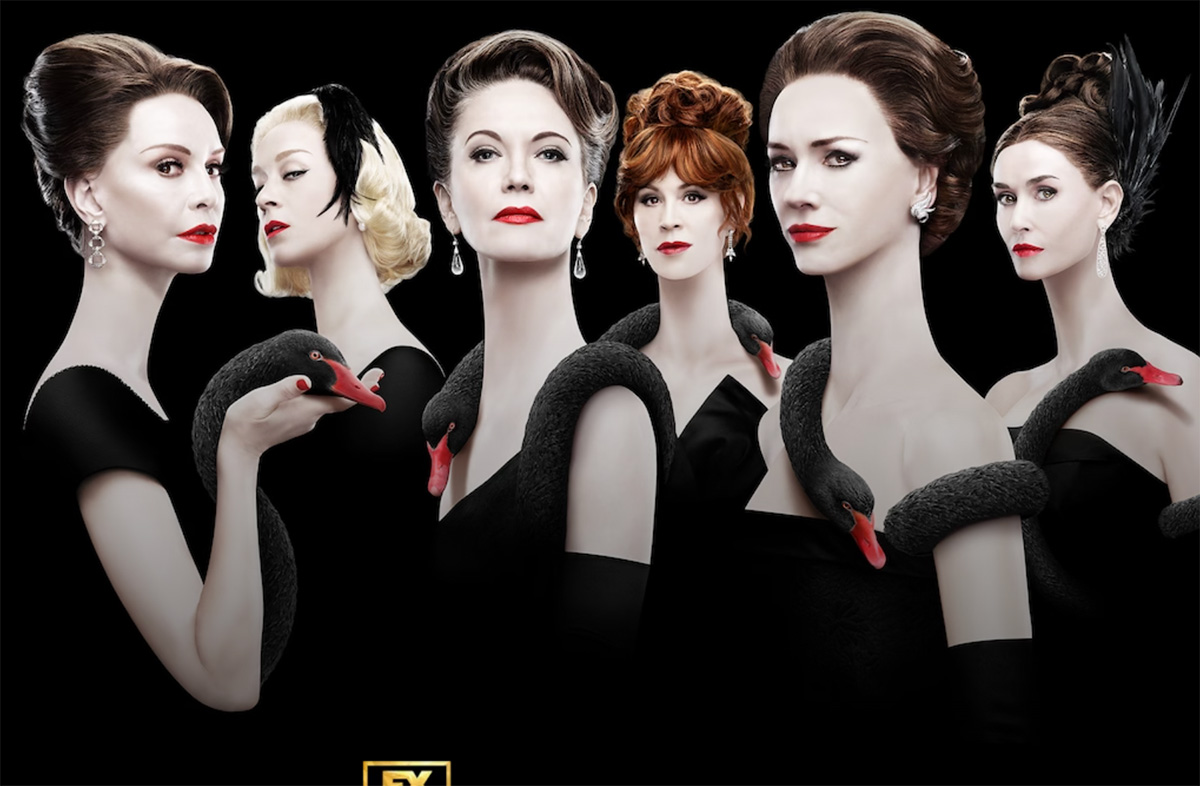
Nothing is more of a pick-me-up in the doldrums of winter than a fabulously acted, incredibly stylish feud. Complete with Champagne flutes and a splendiferous mid-century ball at New York City’s Plaza Hotel. Especially, when it’s part of the ouevre of queer TV producer and creator Ryan Murphy, whose beloved shows include “American Horror Story,” “Glee” and the anthology series “Feud.”
Season 2 of Feud, “Feud: Capote vs. The Swans,” which premiered on Jan. 31, will air weekly on FX through March 13. Episodes stream the next day on Hulu.
“Feud’s” powerhouse cast, which delivers stellar performances, includes: Tom Hollander as Truman Capote along with Naomi Watts, Diane Lane, Chloe Sevigny and Calista Flockhart as Capote’s swans.
Demi Moore plays Ann Woodward, a socialite who Capote falsely said intended to murder her husband. Molly Ringwald portrays Joanne Carson who befriended Capote when nearly no one would take him in. The role of CBS chairman Bill Paley fits the late Treat Williams like a glove.
Hollander makes Capote seem like a brilliant, flawed, cruel, sometimes kind, human being, rather than a “fairy” caricature.
Jessica Lang does a star turn as the ghost of Capote’s mother. Gus Van Sant directs most of the episodes of “Feud.”
“Feud” is based on Laurence Leamer’s book “Capote’s Women.” Playwright and screenwriter Jon Robin Baitz adapted Leamer’s book into the miniseries “Feud.”
“Feud” is the story of how acclaimed queer author Capote, after becoming their best friend betrayed his “swans.”
“The swans,” were the rich, beautiful, New York society women who confided their secrets (from their insecurities about their looks to their husbands’ infidelities) to Capote.
These “swans,” who took Capote into their inner circle, were: Babe Paley (wife of CBS chairman Bill Paley), Lee Radziwill (Jackie Kennedy’s sister), socialite Slim Keith (ex-wife of Howard Hawks and Leland Hayward) and socialite C.Z. Guest.
“You can’t blame a writer for what the characters say,” Capote, once said.
His swans didn’t agree with Capote’s dictum.
Capote’s betrayal of the swans occurred in 1975. That year, “Esquire” published “La Cote Basque, 1965,” a chapter from Capote’s much anticipated novel “Answered Prayers.”
(Capote never completed the novel. An unfinished version was published after his death.)
The “Esquire” story, set in the restaurant where Capote often lunched with his “swans,” hurt and infuriated “the ladies who lunched.” The details revealed in the “Esquire” story were so personal and thinly veiled that the “swans” felt readers would easily identify them.
“Feud” depicts the bonds of friendship that frequently exist between hetero women and queer men. Capote gave his “swans” the love and attention their spouses failed to provide. Babe Paley called Capote her “second husband.”
For Capote, an outsider because he was gay, “the swans” provided acceptance, association with high society (which he both loved and despised) and material for his writing.
Capote became estranged from the “swans” right after the “Esquire” story was published.
“Feud” goes back and forth in time. At first, this is a bit disconcerting. But, soon, it keeps things moving, and provides fascinating glimpses into Capote and the “swans.”
Bill and Babe Paley think Capote is the “other Truman” (Harry Truman) when they meet him in the 1950s.
In the 1970s, after the “swans” have shunned him, Capote is a washed-up, alcoholic, drug-addicted has-been. (Capote died in 1984 at age 59 of liver disease.)
The third episode is the stand-out of “Feud.” In 1966, Capote was at the height of his power after “In Cold Blood, his “non-fiction” novel, had been published to much acclaim and commercial success. To celebrate, Capote threw a Black and White masquerade ball. The ball, to which Capote invited 540 guests, was the most famous party of the 20th century. Katherine Graham of The Washington Post was the guest of honor.
The episode is shot as a (fictional) documentary of the ball. Shot in black and white, it’s visually stunning. We see interviews with some of the “swans,” who are ticked off, but trying not to show it, because Capote had led them to believe they would be the guest of honor.
Watch “Feud,” if you like glam, hats, white gloves, cocktails and wit doused with betrayal and regret.
-
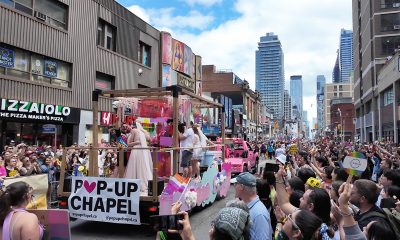
 Canada1 day ago
Canada1 day agoToronto Pride parade cancelled after pro-Palestinian protesters disrupt it
-
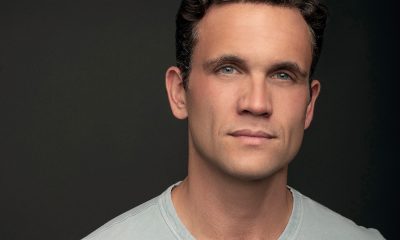
 Theater4 days ago
Theater4 days agoStephen Mark Lukas makes sublime turn in ‘Funny Girl’
-
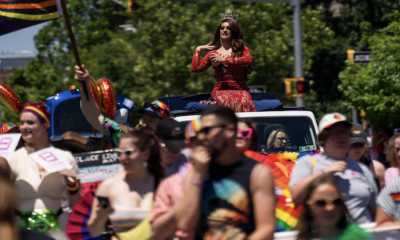
 Baltimore3 days ago
Baltimore3 days agoDespite record crowds, Baltimore Pride’s LGBTQ critics say organizers dropped the ball
-

 Sports4 days ago
Sports4 days agoHaters troll official Olympics Instagram for celebrating gay athlete and boyfriend



